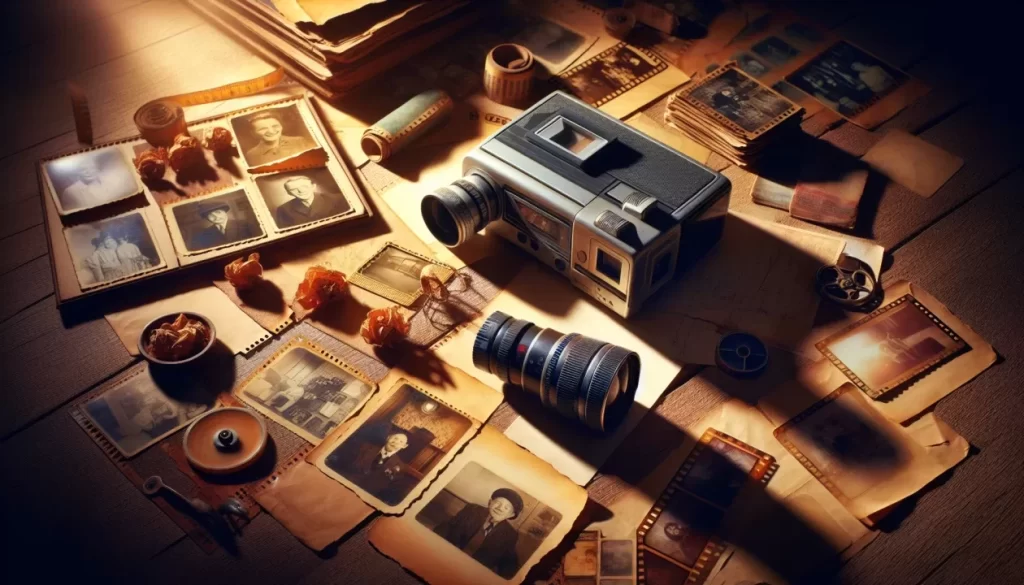Imagine lying under a blanket of twinkling stars, hand in hand with your loved one, as you both gaze up at the night sky in awe. The “Star-Gazing and Romantic Astronomy Night” offers the perfect setting for a mesmerizing date night or a memorable anniversary celebration. This event combines the enchantment of stargazing with the romance of astronomy, providing an unforgettable experience that will leave you feeling connected to both the universe and your significant other. So, prepare to be captivated as you embark on a celestial journey together, exploring the mysteries of the cosmos while creating unforgettable memories.
Planning a Star-Gazing and Romantic Astronomy Night
Are you looking for a unique and unforgettable date night experience? Look no further than a star-gazing and romantic astronomy night! There’s nothing quite like marveling at the wonders of the night sky with your loved one by your side. To ensure that your evening is perfect, there are a few key components to consider: choosing the perfect location, checking the weather forecast, and selecting the right date and time.
Choosing the Perfect Location
When it comes to star-gazing, finding the perfect location is crucial. Look for areas away from city lights, where light pollution won’t hinder your ability to see the stars. Consider visiting a nearby park, a secluded beach, or even your own backyard if it provides an unobstructed view of the sky. Remember to choose a location that has an open, clear view of the horizon to maximize your stargazing experience.
Checking the Weather Forecast
Before you embark on your romantic astronomy night, it’s essential to check the weather forecast. Cloud cover can obstruct your view of the stars, so aim for a clear and cloudless night. Keep an eye out for any potential weather conditions that may interfere with your plans, such as rain or excessive wind. Plan your stargazing adventure on a night when the weather is cooperating, ensuring that you have the best possible viewing conditions.
Selecting the Right Date and Time
In addition to checking the weather forecast, it’s important to consider the date and time of your astronomy night. Choose a date when the moon is not too bright, as this can make it harder to see stars and other celestial objects. New moon nights or nights close to the new moon phase are ideal, as they offer the darkest skies. As for the time, plan for a few hours after sunset when the sky is sufficiently dark. This will give you ample time to explore the night sky without feeling rushed.
Setting Up the Atmosphere
Creating a romantic and cozy atmosphere is essential for an unforgettable astronomy night. By paying attention to the details, you can enhance the overall ambience and make the evening even more magical. Consider these elements to set up the perfect environment:
Decorating the Space
Add a touch of romance by decorating the stargazing area. Use fairy lights, lanterns, or candles to create a soft and enchanting glow. Hang some star-shaped lanterns or lay out glow-in-the-dark stars on a blanket to mimic the night sky. The subtle lighting and celestial-themed decorations will enhance the ambiance, adding a romantic touch to your evening under the stars.
Preparing Comfortable Seating
Comfort is key when spending the night stargazing. Opt for comfortable seating options such as lounge chairs, bean bags, or reclining lawn chairs. Ensure that the seating allows you to comfortably recline and gaze up at the sky without straining your neck. Don’t forget to add extra cushions and blankets for added coziness and warmth.
Creating a Cozy Ambiance
To create a cozy and romantic ambiance, consider bringing a portable fire pit or setting up a small bonfire. The crackling sound of the fire and the warmth it provides will add to the overall experience. Alternatively, you can bring a portable propane heater or a cozy electric blanket to keep you warm on chillier nights. Don’t forget to have some soft background music playing to complete the cozy atmosphere.
Telescope and Binoculars
To truly explore and appreciate the wonders of the night sky, having the right telescope and binoculars is essential. Here’s what you need to know to make the best choices and ensure that your equipment is in top-notch condition.
Selecting the Right Telescope
When selecting a telescope, consider factors such as the type of objects you want to observe, your level of expertise, and your budget. Reflecting telescopes, such as Newtonian or Dobsonian designs, are popular for amateur astronomers due to their affordability and versatility. If you’re new to stargazing, a beginner-level telescope with a moderate aperture size should suit your needs. However, if you’re more experienced or interested in deep-sky observations, you may want to invest in a larger aperture telescope.
Choosing High-Quality Binoculars
Binoculars are a great alternative or addition to a telescope, especially for observing larger areas of the sky or tracking moving objects like comets or meteor showers. Look for binoculars with a high magnification, around 7x to 10x. Ensure that they have a wide field of view to capture as much detail as possible. Consider opting for binoculars with image stabilization features to minimize hand tremors and improve image clarity.
Understanding Telescope and Binocular Features
Before your astronomy night, take the time to familiarize yourself with the features and functions of your telescope and binoculars. Learn how to adjust the focus, change magnification, and align the lenses properly. Practice setting up and calibrating your equipment to ensure a smooth and hassle-free experience on the night of your star-gazing adventure.
Cleaning and Maintaining the Equipment
To maximize the performance and lifespan of your telescope and binoculars, regular cleaning and maintenance are necessary. Use a soft, lint-free cloth to clean the lenses, taking care to remove any dust or smudges. Avoid using harsh chemicals or abrasive materials that could damage the optics. Store your equipment in a clean, dry place to prevent moisture and protect it from any accidental bumps or falls.
Astronomy Guidebooks, Charts, and Apps
Having the right resources at your disposal can greatly enhance your astronomy experience. Guidebooks, charts, and smartphone apps are valuable tools to help you navigate the night sky and identify various celestial objects.
Choosing Comprehensive Astronomy Guidebooks
Astronomy guidebooks are a valuable resource for both beginners and experienced astronomers. Look for guidebooks that provide detailed information on constellations, planets, and deep-sky objects. Opt for books that include vivid illustrations and easy-to-understand explanations, ensuring that you can follow along and make the most of your stargazing adventure.
Exploring Digital Sky Maps
Digital sky maps are an excellent way to navigate through the night sky using your smartphone or tablet. Download a reputable app that offers comprehensive star charts and real-time tracking. With digital maps, you can easily identify constellations, locate specific stars and planets, and track the movement of celestial objects. Some apps even offer augmented reality features that overlay the positions of stars and planets onto your device’s camera view.
Utilizing Astronomy Smartphone Apps
In addition to digital sky maps, there are a plethora of astronomy smartphone apps available that offer a wide range of features. From providing detailed information about celestial events and meteor showers to offering interactive quizzes and educational content, these apps can enhance your knowledge and appreciation of the night sky. With the convenience of having astronomy resources right at your fingertips, you’ll be able to explore and learn about the cosmos like never before.
Comfortable and Romantic Seating Options
To ensure maximum comfort during your stargazing and astronomy night, consider these seating options:
Opting for Cozy Blankets and Pillows
Cozy blankets and pillows are essential for a comfortable and romantic stargazing experience. Bring along a variety of blankets to accommodate different temperature preferences. Fleece blankets are excellent for warmth, while soft throw blankets provide a touch of luxury. Pillows will add extra comfort, allowing you to relax and fully enjoy the night sky without any discomfort.
Choosing Comfortable Outdoor Chairs
If you prefer a more upright seating position, consider investing in comfortable outdoor chairs. Look for chairs that provide adequate back support and have adjustable features, allowing you to find the perfect position for gazing at the stars. Foldable camping chairs or reclining lounge chairs are convenient options as they are portable and easy to set up. Remember to choose chairs that are sturdy and built to withstand outdoor conditions.
Using Portable Picnic Mats
If you prefer a more casual and intimate seating arrangement, picnic mats are a great option. Look for mats that are waterproof and spacious enough to accommodate you and your loved one comfortably. Opt for mats with padded lining for added comfort and insulation from the ground. Picnic mats are lightweight and easy to transport, making them an excellent choice for outdoor adventures.
Stargazing Accessories
To ensure a comfortable and hassle-free stargazing experience, consider these essential accessories:
Using Red LED Flashlights
When you need additional lighting during your astronomy night, red LED flashlights are the way to go. Red light preserves your night vision, unlike white light, which can interfere with your ability to see stars. Select flashlights with adjustable brightness levels, allowing you to control the intensity of the light. Make sure to avoid shining the flashlight in the direction of others, as it may disrupt their viewing experience.
Wearing Warm Clothing
Even during warmer seasons, nights can get chilly, especially when you spend an extended period outside. Dress in layers and choose clothing made of materials that offer both warmth and breathability. Opt for jackets or sweaters that are lightweight yet insulated. Don’t forget to bring hats and gloves for added warmth, as extremities can cool down quickly. By dressing appropriately, you can fully enjoy your stargazing experience without feeling uncomfortable due to the cold.
Bringing Mosquito Repellents
With an evening spent outdoors, pesky mosquitoes can be a nuisance. To ensure uninterrupted stargazing, pack effective mosquito repellents. Look for options that contain DEET or other recommended active ingredients. Apply the repellent before heading out and bring extra to reapply as needed. Consider using mosquito repellent candles or lanterns to create a bug-free zone around your stargazing area.
Carrying Refreshments and Snacks
To make your astronomy night even more enjoyable, don’t forget to pack some refreshments and snacks. Opt for portable and easy-to-eat options such as sandwiches, fruits, nuts, and energy bars. Bring along a thermos with your favorite hot beverage, like hot chocolate or herbal tea, to keep you warm during colder nights. Hydration is also essential, so pack plenty of water or other non-alcoholic beverages to stay refreshed throughout the evening.
Exploring the Night Sky
Once everything is set up and you’re comfortable in your seating area, it’s time to explore the mesmerizing night sky. Here are some tips for getting the most out of your stargazing experience:
Identifying Constellations
Start by familiarizing yourself with a few key constellations. Look for easily recognizable patterns such as the Big Dipper, Orion’s Belt, or Scorpius. Use your guidebooks or smartphone apps to help you locate these constellations and identify their individual stars. As you become more confident, you can start exploring neighboring constellations and tracing their mythological stories.
Spotting Planets and Deep-Sky Objects
In addition to constellations, try spotting planets and deep-sky objects. Planets such as Jupiter, Saturn, and Mars are often visible to the naked eye and can offer a fascinating sight through a telescope or binoculars. Deep-sky objects like star clusters, nebulae, and galaxies can also be observed with the right equipment. Consult your guidebooks or digital sky maps to locate these objects and learn interesting facts about them.
Understanding Meteor Showers and Celestial Events
Keep an eye out for meteor showers and celestial events that may occur during your stargazing night. Meteor showers, such as the Perseids or the Geminids, are spectacular displays caused by the Earth passing through a trail of debris left by a comet. Check the dates and timings of upcoming meteor showers and be prepared to witness shooting stars streak across the sky. Additionally, pay attention to any rare or significant events such as eclipses, conjunctions, or supermoons, as they provide extraordinary opportunities to witness celestial phenomena.
Romantic Astronomy Activities
To add a romantic touch to your astronomy night, consider these activities that will create lasting memories:
Writing Love Letters under the Stars
Take advantage of the romantic setting and write love letters to each other under the starry sky. Bring along paper and pens, and let the magical surroundings inspire you. Pour your heart out and express your feelings with heartfelt words that capture the beauty of the night and the love you share. Exchange the letters and read them to each other for a truly intimate and memorable experience.
Taking Romantic Stargazing Photos
Capture the beauty of the night sky and your special moments together by taking romantic stargazing photos. Set up a tripod for your camera or smartphone to ensure stability and prevent blurry images. Experiment with different camera settings, such as long exposures, to capture stars, constellations, and even meteor streaks. Don’t forget to include yourselves in the photos, embracing under the stars or pointing towards a particularly captivating celestial object.
Naming a Star after Your Loved One
For the ultimate romantic gesture, consider naming a star after your loved one. Several organizations offer star-naming services that provide a certificate and coordinates of a specific star. As you stargaze together, surprise your partner with the news that a star in the night sky bears their name. It’s a symbolic and heartfelt gesture that will forever link the two of you to the vastness of the universe.
Astrophotography
Astrophotography allows you to capture stunning images of the night sky, preserving your stargazing experiences for years to come. Here are some essentials for getting started in astrophotography:
Choosing the Right Camera for Astrophotography
To capture breathtaking astrophotographs, you’ll need a camera that excels in low-light conditions. Look for a camera with a high ISO range, good noise reduction capabilities, and the ability to capture long exposures. Interchangeable lens cameras, such as DSLRs or mirrorless cameras, are popular choices for astrophotography due to their versatility and manual control features.
Learning Astrophotography Techniques
Astrophotography requires specific techniques to achieve stunning results. Learn about long exposure photography, which allows you to capture the faint light of stars and other celestial objects. Experiment with different exposure times, ISO settings, and aperture values to achieve the desired effect. Additionally, consider using a star tracker or equatorial mount to compensate for the Earth’s rotation and avoid star trails in your images.
Editing and Enhancing Astrophotographs
Editing your astrophotographs can help bring out the best in your images. Use software such as Adobe Photoshop or Lightroom to adjust the exposure, contrast, and color balance. Take advantage of specialized astrophotography software to remove noise, enhance details, and stack multiple exposures to reveal subtle features. Don’t be afraid to experiment and develop your unique editing style to create stunning astrophotographs that reflect the beauty of the night sky.
Memorable Gifts and Keepsakes
To commemorate your star-gazing and romantic astronomy night, consider these memorable gifts and keepsakes:
Engraved Telescope or Binoculars
An engraved telescope or binoculars can serve as a lasting reminder of your shared passion for astronomy. Explore options to have the equipment engraved with your partner’s name, a special date, or a meaningful quote. Not only will it add a personalized touch to the equipment, but it will also serve as a cherished keepsake that you can use during future stargazing adventures together.
Custom Star Map Prints
Turn your cherished memories and the night sky into a beautiful piece of art with custom star map prints. These prints display the position of stars, constellations, and celestial events on a specific date and location. Select the date of your astronomy night and the location where you stargazed together, then choose the design and size that best suits your preferences. The result is a unique and personalized artwork that captures the magic of your special night under the stars.
Personalized Constellation Jewelry
For a romantic and wearable keepsake, consider personalized constellation jewelry. Choose a piece that features the constellation associated with your loved one’s zodiac sign or a constellation that holds a special meaning for the two of you. Look for necklaces, bracelets, or rings that can be customized with their birthstone or initials. This thoughtful gift will serve as a beautiful reminder of your shared passion and the special moments you’ve experienced together.
With careful planning, attention to detail, and a shared love for the wonders of the night sky, your star-gazing and romantic astronomy night is sure to be an unforgettable experience. From selecting the perfect location to capturing stunning astrophotographs, each aspect contributes to the overall magic of the night. So grab your telescope, bundle up in cozy blankets, and let the beauty of the cosmos ignite your love and imagination on this celestial adventure.


